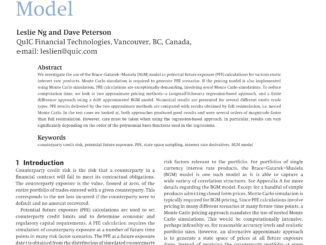
A previous paper (West 2005) tackled the issue of calculating accurate uni-, bi- and trivariate normal probabilities. This has important applications in the pricing of multiasset options, e.g. rainbow options. In this paper, we derive the Black—Scholes prices of several styles of (multi-asset) rainbow options using change-of-numeraire machinery. Hedging issues and deviations from the Black-Scholes pricing model are also briefly considered.
1. Definition of a Rainbow Option
Rainbow Options refer to all options whose payoff depends on more than one underlying risky asset; each asset is referred to as a colour of the rainbow. Examples of these include:
• “Best of assets or cash” option, delivering the maximum of two risky assets and cash at expiry (Stulz 1982), (Johnson 1987), (Rubinstein 1991)
• “Call on max” option, giving the holder the right to purchase the maximum asset at the strike price at expriry, (Stulz 1982), (Johnson 1987)
• “Call on min” option, giving the holder the right to purchase the minimum asset at the strike price at expiry (Stulz 1982), (Johnson 1987)
• “Put on max” option, giving the holder the right to sell the maximum of the risky assets at the strike price at expiry, (Margrabe 1978), (Stulz 1982), (Johnson 1987)
• “Put on min” option, giving the holder the right to sell the minimum of the risky assets at the strike at expiry (Stulz 1982), (Johnson 1987)
To log in or register visit here.


